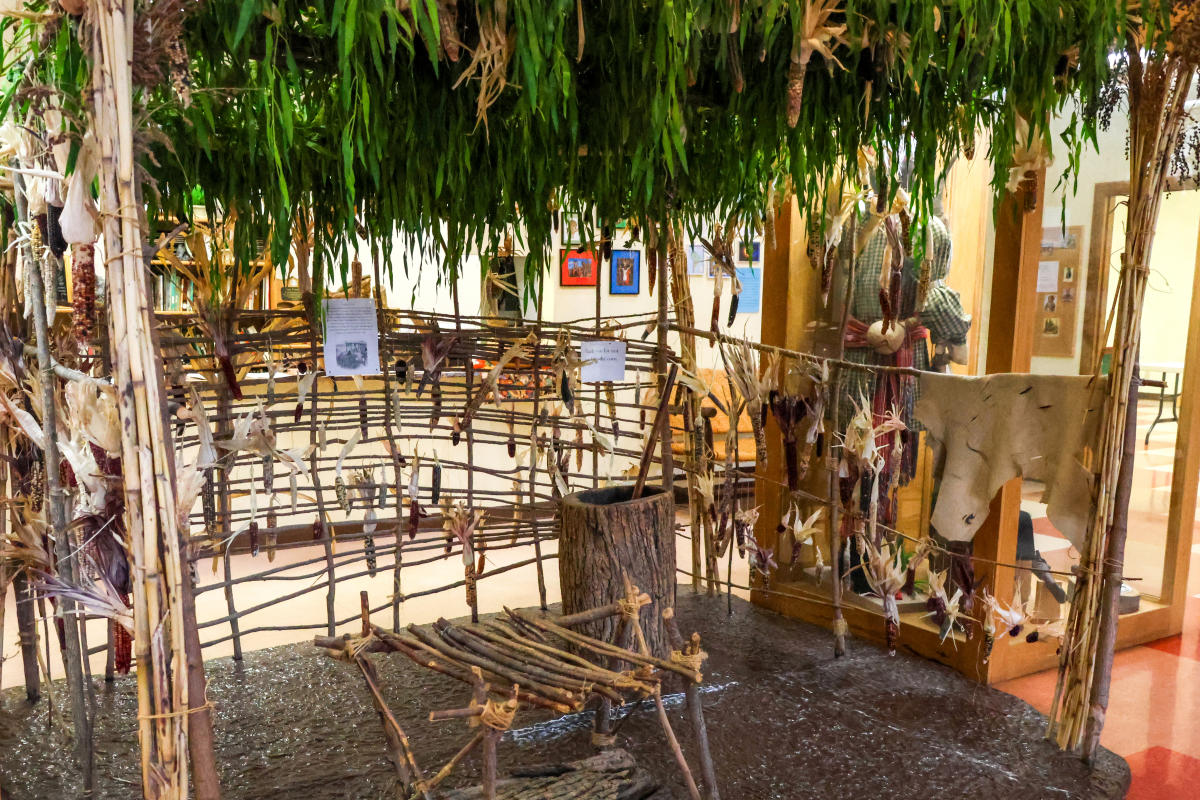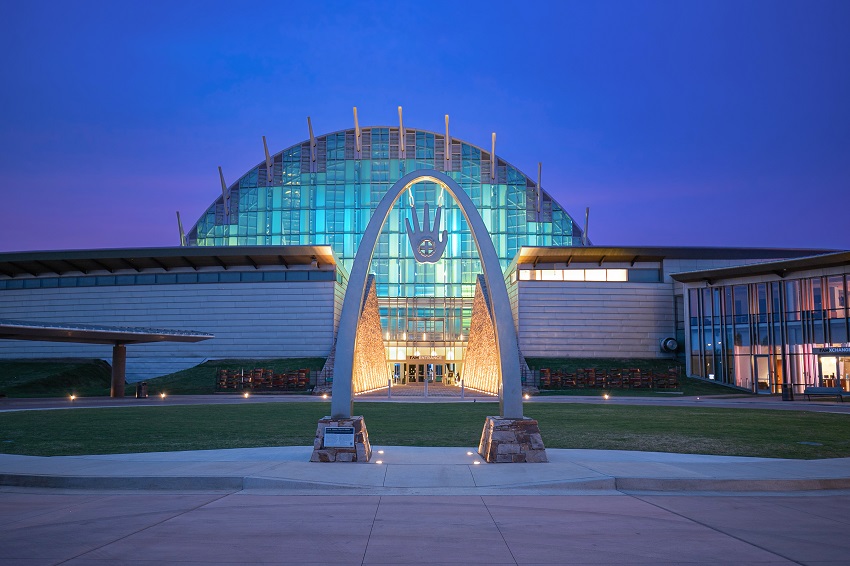
The Unseen Gateway: A Deep Dive into Parking Validation at Native American Museums
Abstract: This article provides an in-depth, encyclopedic examination of parking validation systems within the context of Native American museums. Far from a mere logistical convenience, parking validation at these institutions represents a critical interface between operational pragmatism and the profound cultural, educational, and social missions they uphold. This analysis explores the multifaceted importance of validation, encompassing its role in enhancing accessibility, fostering community engagement, supporting educational initiatives, navigating urban complexities, and contributing to the overall visitor experience. It delves into the operational mechanisms, challenges, best practices, and future trends, framing parking validation as an integral component of cultural stewardship and decolonization efforts in the modern museum landscape.
I. Introduction: Beyond the Transactional – Parking as a Portal
In the intricate tapestry of museum operations, elements like curation, exhibition design, and educational programming often command the spotlight. Yet, seemingly mundane logistical details, such as parking, play an equally pivotal, albeit often overlooked, role in shaping the visitor experience and fulfilling an institution’s mission. For Native American museums, the seemingly simple act of parking validation transcends a mere financial transaction; it becomes a critical gateway, embodying the institution’s commitment to accessibility, community, and cultural preservation. This article endeavors to illuminate the profound significance of parking validation within this specific institutional context, examining its operational nuances, strategic implications, and its alignment with the unique philosophical underpinnings of Native American cultural institutions.

II. The Unique Mandate of Native American Museums
Before delving into parking specifics, it is essential to contextualize the distinctive mission and operational environment of Native American museums. Unlike traditional encyclopedic museums, these institutions are often deeply rooted in principles of cultural sovereignty, self-representation, and community engagement. Their mandates typically include:
- Cultural Preservation and Revitalization: Safeguarding and promoting Indigenous languages, arts, traditions, and historical narratives.
- Education and Decolonization: Dispelling stereotypes, correcting historical inaccuracies, and offering authentic perspectives on Indigenous experiences, often challenging colonial narratives.
- Community Engagement and Support: Serving as vital cultural hubs for tribal members, elders, and youth, fostering intergenerational knowledge transfer and community well-being.
- Repatriation and Ethical Stewardship: Leading efforts in the return of ancestral remains and cultural objects, aligning with the Native American Graves Protection and Repatriation Act (NAGPRA) and broader ethical practices.
- Advocacy and Sovereignty: Acting as platforms for Indigenous voices and advocating for tribal rights and self-determination.

These missions inherently demand an environment of openness and accessibility. Financial or logistical barriers, such as prohibitive parking costs, can directly undermine these core objectives, particularly for communities that have historically faced systemic disenfranchisement.
III. Deconstructing Parking Validation: Mechanisms and Purpose
Parking validation is a mechanism by which an institution, often in partnership with a parking facility, reduces or completely waives the cost of parking for its patrons. Its primary purposes are:
- Enhanced Accessibility: Reducing a financial barrier that might otherwise deter potential visitors.
- Improved Visitor Experience: Alleviating stress and financial burden, allowing visitors to focus on their cultural engagement.
- Encouraging Extended Visits: Removing time-related financial pressure, promoting longer, more immersive experiences within the museum.
- Traffic Management: Guiding visitors to designated parking areas, often in collaboration with urban planning initiatives.
- Promoting Public Transportation Alternatives: By offering validation for nearby garages, it can free up street parking, potentially encouraging public transit use for those who prefer it.
Common validation mechanisms include:
- Physical Stamps/Stickers: Applied to a parking ticket at the museum’s front desk or gift shop.
- Chaser Tickets: A separate ticket issued by the museum that, when presented with the original parking ticket, reduces the fee.
- QR Codes/Barcodes: Digital codes scanned at the parking exit, often integrated with museum apps or website.
- License Plate Recognition (LPR) Systems: Digital systems where the museum registers a visitor’s license plate, and the parking system automatically applies the discount upon exit.
- Pre-paid Vouchers/Codes: Distributed for specific events or groups, redeemable at the parking facility.
IV. The Strategic Imperative: Parking Validation in Native American Museums
For Native American museums, the strategic deployment of parking validation is not merely a convenience but a crucial operational decision deeply intertwined with their ethical and cultural commitments.
A. Fostering Inclusivity and Equity:
Many Native American communities have historically faced economic disparities. High parking fees can represent a significant barrier, especially for families, school groups from underserved areas, or elders with limited mobility and fixed incomes. Validation directly addresses this, upholding the Indigenous value of hospitality and ensuring that cultural heritage is accessible to all, irrespective of socioeconomic status. This aligns with decolonization efforts that seek to dismantle systems of exclusion.
B. Supporting Educational Outreach:
Native American museums are vital educational resources. School trips, university researchers, and community learning programs often involve groups traveling by car or bus. Validated parking removes a substantial logistical and financial hurdle for these educational visits, enabling broader dissemination of accurate Indigenous histories and contemporary issues. For institutions like the National Museum of the American Indian (NMAI) in Washington D.C., situated in a high-cost urban environment, validation becomes absolutely critical for school groups to visit without prohibitive expenses.
C. Strengthening Community Ties:
For many Native American museums, their most important audience is their own community. Tribal members, cultural practitioners, and elders visit not only for exhibitions but also for community gatherings, ceremonies, and access to archival resources. Ensuring free or reduced-cost parking facilitates these vital connections, reinforcing the museum’s role as a living cultural center rather than just a static exhibition space. It acknowledges and respects the community’s inherent right to access its own heritage.
D. Navigating Urban Realities:
Many prominent Native American museums are located in densely populated urban centers where parking is scarce and expensive. Examples include the NMAI in D.C. and New York, or tribal museums within metropolitan areas. Without effective validation programs, the sheer cost and difficulty of parking could severely limit visitation, especially for longer, more meaningful engagement. Strategic partnerships with nearby parking garages are paramount in such contexts.
E. Enhancing the Visitor Experience and Mission Alignment:
A positive arrival experience sets the tone for the entire museum visit. If visitors begin their experience stressed by parking costs or difficulties, it can detract from their ability to engage with the exhibits. By offering seamless parking validation, Native American museums demonstrate a holistic approach to visitor care, aligning practical logistics with their overarching mission of respectful cultural engagement. It communicates: "Your presence here is valued, and we want to make your access as easy as possible."
V. Implementation Models and Best Practices
Effective parking validation requires thoughtful planning and execution:
- Strategic Partnerships: Museums often negotiate favorable rates or dedicated spaces with private parking garages, municipal lots, or university parking facilities. These agreements can range from subsidized rates to full cost absorption by the museum.
- Clear Communication: Prominent signage, website information, and staff training are essential to inform visitors about validation options, participating garages, and the process. Ambiguity can negate the benefit.
- Tiered Validation Systems: Some museums implement tiered systems, offering full validation for members, school groups, or specific community events, while providing partial discounts for general visitors.
- Technology Integration: Modern solutions, such as QR code scanning at the front desk or seamless integration with museum apps and membership systems, streamline the process and reduce potential for human error.
- Accessibility Considerations: Ensuring that validated parking facilities are physically accessible, with ADA-compliant spaces and clear pathways to the museum entrance, is crucial for visitors with disabilities.
- Staff Training: Front-line staff must be thoroughly trained on the validation process, troubleshooting, and providing clear directions to parking facilities.
- Regular Review and Adjustment: Parking needs and costs evolve. Museums should periodically review their validation programs to ensure they remain effective, financially sustainable, and responsive to visitor feedback.
VI. Challenges and Considerations
Despite its benefits, implementing and maintaining parking validation presents several challenges:
- Cost to the Museum: Validation is rarely free. The museum often bears the cost of subsidized parking, which must be factored into the operational budget. This can be a significant expense, especially for smaller institutions with limited funding.
- Logistical Complexity: Managing validation systems, especially across multiple parking partners or different visitor tiers, can be administratively complex and require dedicated resources.
- Abuse Prevention: Systems must be designed to minimize abuse, ensuring that validation is used legitimately by museum patrons.
- Evolving Urban Landscapes: Changes in urban development, public transportation infrastructure, or city parking policies can necessitate frequent adjustments to validation strategies.
- Balancing Act: Striking a balance between providing maximum visitor convenience and maintaining the museum’s financial health is an ongoing challenge.
- Decolonizing Infrastructure: A deeper, more philosophical consideration involves examining if even the act of charging for parking, and then validating it, perpetuates a transactional model that contrasts with Indigenous concepts of communal access to cultural heritage. While validation mitigates the cost, some argue for inherent free access as a principle.
VII. Future Trends and Innovations
The future of museum parking validation is likely to be shaped by technological advancements and evolving urban mobility trends:
- Smart Parking Systems: Real-time parking availability apps, dynamic pricing, and predictive analytics can optimize parking management and visitor guidance.
- Integrated Mobility Solutions: Partnerships with ride-sharing services, bicycle share programs, and enhanced public transit links can reduce reliance on private vehicle parking.
- AI and Data Analytics: Using data to understand visitor parking patterns can help museums refine their validation strategies, optimize allocation of funds, and identify peak demand periods.
- Emphasis on Sustainability: Promoting eco-friendly transportation options, including electric vehicle charging stations within validated parking facilities, aligns with broader environmental stewardship goals often embraced by Indigenous communities.
- Seamless Digital Experiences: Further integration of parking validation into museum apps, online ticketing, and membership portals will create an even more fluid and user-friendly experience.
VIII. Conclusion: The Invisible Thread of Access
Parking validation at Native American museums, though seemingly a minor operational detail, serves as an invisible yet powerful thread connecting visitors to the profound cultural heritage within. It is a tangible manifestation of the museum’s commitment to accessibility, equity, and community, directly supporting its educational, preservation, and decolonization mandates. By strategically addressing the practicalities of visitor access, these institutions uphold their foundational values, ensuring that the vital stories, languages, and traditions of Indigenous peoples remain vibrantly alive and accessible to all who seek to learn and engage. In an era where cultural institutions are increasingly striving for inclusivity, understanding and optimizing such fundamental aspects as parking validation is not merely good practice; it is an ethical imperative and a testament to the enduring power of cultural stewardship.


